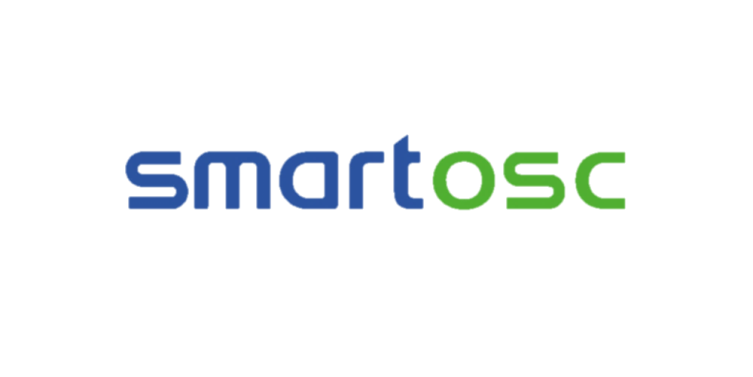In today’s fast-paced and ever-evolving business landscape, organizations are increasingly embracing agile methodologies to stay competitive and responsive to change. At the heart of this approach lies the concept of an agile work environment, where flexibility, collaboration, and continuous improvement are prioritized.
What is an Agile Work Environment?
In an agile work environment, where change is embraced and collaboration thrives, it’s crucial for job architecture and descriptions to evolve alongside the dynamic nature of work. However, statistics reveal that a significant portion of HR managers (42%) and employees (45%) perceive their job structures and descriptions as outdated or nonexistent. This underscores the importance of fostering a culture of continuous improvement and adaptability within organizations to ensure alignment with the agile principles of flexibility, responsiveness, and iterative development. At the heart of an agile environment are the principles outlined in the Agile Manifesto, which prioritize individuals and interactions over processes and tools, working software over comprehensive documentation, customer collaboration over contract negotiation, and responding to change over following a plan. Agile work environments typically feature cross-functional teams, iterative development cycles (sprints), regular stakeholder engagement, and a focus on delivering incremental value. They often utilize agile frameworks such as Scrum, Kanban, or Lean to guide their processes and practices.
The benefits of an agile work environment
- Flexibility: Agile work environments provide teams with the flexibility to adapt and adjust their approaches in response to changing circumstances. By embracing change rather than resisting it, organizations can remain agile and resilient in the face of uncertainty and disruption.
- Collaboration: One of the key benefits of an agile environment is its ability to foster collaboration among team members, stakeholders, and customers. By breaking down silos and promoting cross-functional teamwork, organizations can harness the collective expertise and creativity of their workforce to drive innovation and achieve shared goals.
- Speed to Market: Agile work environments enable organizations to deliver value to customers more quickly and efficiently. By breaking projects down into smaller, manageable tasks and delivering incremental updates regularly, teams can accelerate time-to-market and stay ahead of the competition.
- Continuous Improvement: An agile environment encourages a culture of continuous improvement, where teams regularly reflect on their processes, identify areas for enhancement, and implement changes accordingly. By embracing experimentation, learning, and adaptation, organizations can drive innovation, optimize performance, and achieve excellence.
- Enhanced Employee Engagement: Agile work environments empower employees to take ownership of their work, make decisions autonomously, and contribute meaningfully to the organization’s success. By providing opportunities for skill development, career growth, and personal fulfillment, organizations can enhance employee satisfaction, retention, and productivity.
⇒ Watch more: What is Fresher? What is the role and importance of Freshers in the labor market?
The Challenges of Agile Work Environment
Cultural Resistance
Resistance to change: Employees may resist adopting new ways of working, particularly if they are accustomed to traditional hierarchical structures or rigid processes. Lack of buy-in: Without leadership support and employee buy-in, efforts to transition to an agile environment may face significant resistance and pushback. Siloed mentality: Silos between teams or departments can hinder collaboration and communication, making it challenging to adopt a more cross-functional and collaborative approach.
Communication Breakdowns
Information overload: In an agile work environment, the volume of communication can increase significantly, leading to information overload and confusion. Remote work challenges: With more teams working remotely, communication barriers such as time zone differences, language barriers, and technology issues may arise. Lack of clarity: Unclear goals, roles, and responsibilities can lead to miscommunication, misunderstandings, and conflicts within teams.
Technological Limitations
Legacy systems: Outdated technology infrastructure and legacy systems may not support the agility and flexibility required for an agile work environment. Integration complexities: Integrating disparate systems and tools can be complex and time-consuming, hindering the seamless flow of information and collaboration. Cybersecurity risks: With more employees working remotely and accessing sensitive data from various locations and devices, cybersecurity risks may increase, posing a threat to data privacy and organizational security.
Scalability and Sustainability
Scalability challenges: Scaling agile practices across larger organizations or multiple teams can be challenging, requiring careful coordination and alignment. Sustainability concerns: Sustaining agility over the long term requires ongoing commitment, investment, and organizational support. Without proper governance and oversight, agile initiatives may lose momentum and effectiveness over time.
Resistance to Measurement and Metrics
Traditional performance metrics: Traditional performance metrics and KPIs may not accurately capture the value and impact of agile practices, leading to skepticism and resistance from stakeholders. Cultural shift: Shifting from a focus on individual performance to team-based metrics and outcomes may require a cultural shift and mindset change within the organization. Balancing autonomy and accountability: Finding the right balance between empowering teams to self-organize and holding them accountable for results can be challenging, requiring clear expectations and transparent communication. ⇒ Watch more: How to Become a Tester?
Best Practices for adopting an agile work environment
Secure leadership buy-in and support for the initiative
Before embarking on the journey to adopt an agile environment, securing buy-in and support from leadership is crucial. Leadership commitment provides the necessary resources, guidance, and organizational alignment needed for a successful transition. Leaders play a pivotal role in setting the vision, communicating the benefits of agility, and championing the initiative throughout the organization.
Ensure sufficient training and education opportunities are provided
Transitioning to an agile work environment requires a shift in mindset, behaviors, and practices. Organizations must provide sufficient training and education opportunities for employees at all levels to facilitate this transition effectively. Training programs should cover agile principles, methodologies, tools, and techniques to equip employees with the skills and knowledge needed to embrace agility.
Promote collaboration among teams and departments
Collaboration lies at the heart of agility. Organizations must foster a culture of collaboration, transparency, and cross-functional teamwork to break down silos and facilitate information sharing. Encouraging open communication channels, holding regular meetings, and leveraging collaborative tools can help promote collaboration among teams and departments.
Recognize that this process will involve iteration and continuous improvement
Agile is not a one-time implementation but rather an ongoing journey of iteration and continuous improvement. Organizations must embrace the iterative nature of agility and be prepared to adapt and evolve. Encourage teams to experiment, learn from failures, and make incremental improvements based on feedback and data.
Prioritize and support employees’ work-life balance
While agility brings many benefits, it’s essential to prioritize employees’ well-being and work-life balance. Agile environments should support flexible work arrangements, remote work options, and initiatives that promote employee health and wellness. Encourage employees to set boundaries, take breaks, and prioritize self-care to avoid burnout and maintain productivity.
Conclusion
An agile work environment represents a transformative approach to work that empowers organizations to thrive in an increasingly complex and dynamic world. By embracing flexibility, collaboration, and continuous improvement, organizations can unlock new levels of innovation, productivity, and success. When discussing agile environments, SmartOSC is an essential mention. Whether you’re a seasoned professional or a rising talent, SmartOSC offers exciting career opportunities for individuals looking for IT jobs in Vietnam. Join SmartOSC and become part of a forward-thinking team dedicated to shaping the future of e-commerce and technology.






